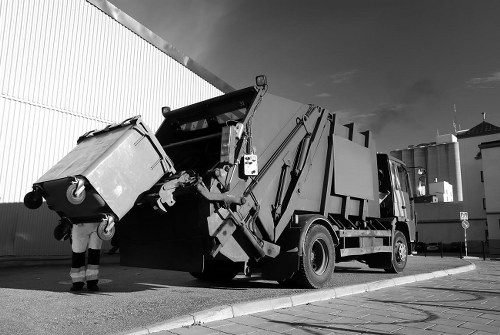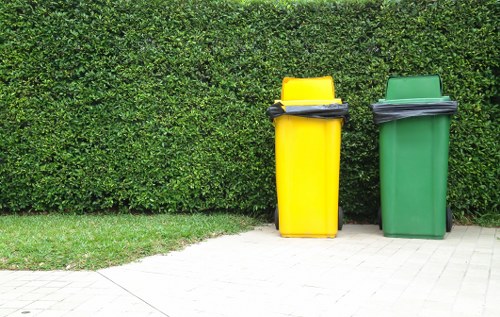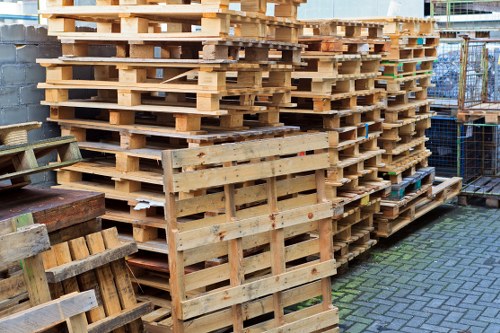Builders Waste Clearance: A Crucial Component of Waste Recycling

In the construction industry, managing waste is a significant challenge. Builders waste clearance plays a pivotal role in ensuring that construction sites remain clean, safe, and environmentally friendly. Effective waste clearance not only complies with regulations but also contributes to sustainable waste recycling practices.
Proper waste management in construction involves the systematic removal and recycling of various materials generated during building projects. From concrete and wood to metals and plastics, each type of waste requires specialized handling to maximize recycling and minimize landfill impact.
Implementing efficient waste clearance strategies can lead to substantial cost savings for builders. By reducing the volume of waste sent to landfills, companies can lower disposal fees and even generate revenue through recycling materials.

The Importance of Builders Waste Clearance
Builders waste clearance is essential for several reasons. Firstly, it ensures compliance with environmental regulations that mandate the proper disposal and recycling of construction waste. Failure to adhere to these regulations can result in hefty fines and damage to a company's reputation.
Secondly, effective waste clearance enhances site safety. Accumulated debris and waste can create hazards for workers, increasing the risk of accidents and injuries. Regular removal of waste maintains a clean and organized workspace, promoting a safer environment.
Moreover, sustainable waste management practices contribute to environmental conservation. Recycling construction materials reduces the demand for new resources, conserves energy, and decreases greenhouse gas emissions associated with the production of new materials.

Types of Construction Waste
Construction projects generate a diverse range of waste materials, each requiring specific handling methods. Common types of builders waste include:
- Concrete and Bricks: Often recycled into aggregate for new construction projects.
- Wood: Reclaimed for use in other projects or processed into mulch and biomass fuel.
- Metals: Highly recyclable, metals can be melted down and reused in manufacturing.
- Plastics: Used plastics can be repurposed into various products or recycled into raw materials.
- Drywall: Can be recycled or repurposed, reducing the need for new materials.

Effective Strategies for Builders Waste Clearance
Implementing effective strategies for builders waste clearance is crucial for maximizing recycling efforts and minimizing environmental impact. Here are some key strategies:
- Waste Segregation: Separating different types of waste at the source ensures that materials can be efficiently recycled.
- On-Site Recycling Facilities: Establishing facilities on-site allows for immediate processing of recyclable materials, reducing transportation costs and contamination risks.
- Partnering with Recycling Companies: Collaborating with specialized recycling firms can enhance the efficiency and effectiveness of waste management processes.
- Training and Education: Educating workers about proper waste segregation and handling practices promotes adherence to recycling protocols.
- Regular Monitoring and Auditing: Continuously monitoring waste management practices helps identify areas for improvement and ensures compliance with regulations.

Benefits of Sustainable Builders Waste Clearance
Adopting sustainable waste clearance practices offers numerous benefits for builders and the environment alike:
- Cost Savings: Reducing waste disposal costs and generating revenue through material recycling can significantly impact a company's bottom line.
- Environmental Protection: Minimizing landfill usage and conserving natural resources contributes to a healthier environment.
- Enhanced Reputation: Demonstrating a commitment to sustainability can improve a company's image and attract environmentally conscious clients.
- Regulatory Compliance: Ensuring proper waste management helps businesses stay compliant with local and national regulations, avoiding potential fines and legal issues.
- Resource Efficiency: Efficient use and recycling of materials optimize resource utilization, reducing the need for new raw materials.
Innovations in Builders Waste Clearance
The field of waste management is continually evolving, with innovations enhancing builders waste clearance processes:
Smart Waste Segregation Systems utilize advanced technologies to automate the sorting of materials, increasing efficiency and accuracy in recycling efforts.
Additionally, eco-friendly waste disposal methods are being developed to further reduce the environmental footprint of construction projects.
Implementing these innovations can give builders a competitive edge while promoting sustainable practices.
Challenges in Builders Waste Clearance
Despite the benefits, several challenges can impede effective waste clearance in the construction industry:
- Cost Constraints: Initial investments in waste management infrastructure and recycling facilities can be significant.
- Lack of Awareness: Insufficient knowledge about sustainable waste practices can hinder their implementation.
- Regulatory Complexity: Navigating the myriad of regulations and compliance requirements can be daunting for builders.
- Logistical Issues: Efficiently transporting and processing diverse waste materials requires careful planning and coordination.
Addressing these challenges through strategic planning and investment is essential for successful builders waste clearance.
Choosing the Right Waste Clearance Service
Selecting a reliable waste clearance service is crucial for effective waste management. Here are some factors to consider:
- Experience and Expertise: Opt for services with proven experience in handling construction waste and knowledge of recycling processes.
- Comprehensive Services: A service that offers waste collection, sorting, recycling, and disposal ensures a seamless waste management process.
- Environmental Commitment: Choose companies that prioritize sustainable practices and have certifications demonstrating their commitment to environmental responsibility.
- Flexibility and Scalability: The service should be able to adapt to the specific needs of your project, regardless of its size or complexity.
- Transparent Pricing: Clear and upfront pricing helps in managing budgets and avoiding unexpected costs.
Implementing a Successful Waste Clearance Plan
To ensure effective builders waste clearance, it's essential to develop and implement a comprehensive waste management plan:
- Assess Waste Generation: Identify the types and quantities of waste your project will produce.
- Set Clear Objectives: Define what you aim to achieve with your waste management, such as reducing landfill usage or increasing recycling rates.
- Develop a Segregation System: Create a system for separating different types of waste to facilitate recycling and disposal.
- Schedule Regular Clearances: Plan regular waste removal schedules to prevent accumulation and maintain site safety.
- Monitor and Review: Continuously monitor waste management practices and make adjustments as needed to improve efficiency.
By following these steps, builders can create an effective waste clearance system that supports both operational efficiency and environmental sustainability.
Case Studies: Success Stories in Waste Recycling
Examining successful implementations of builders waste clearance can provide valuable insights:
Case Study 1: A major construction firm implemented a comprehensive waste segregation system, resulting in a 60% increase in recyclable materials and a significant reduction in waste disposal costs.
Case Study 2: By partnering with a specialized recycling company, another builder streamlined their waste management process, achieving full compliance with environmental regulations and enhancing their corporate sustainability profile.
These examples demonstrate the tangible benefits of investing in effective waste clearance and recycling practices.
Future Trends in Builders Waste Clearance
The landscape of builders waste clearance is likely to evolve with advancements in technology and growing environmental awareness:
- Automation and AI: Intelligent systems can optimize waste sorting and management, increasing efficiency and accuracy.
- Circular Economy Models: Emphasizing the reuse and recycling of materials to create a closed-loop system, reducing waste generation.
- Green Building Certifications: Increasing demand for sustainable building practices will drive the adoption of advanced waste management strategies.
- Innovative Recycling Technologies: New methods for processing and repurposing construction materials will enhance recycling capabilities.
Staying abreast of these trends will enable builders to adopt leading-edge waste clearance practices, ensuring long-term sustainability and compliance.
Conclusion
Builders waste clearance is an integral part of the construction industry's move towards sustainability. By implementing effective waste management strategies, construction companies can reduce environmental impact, comply with regulations, and achieve cost savings.
Embracing recycling and sustainable practices not only benefits the environment but also enhances the reputation and operational efficiency of construction firms. As the industry continues to evolve, staying informed about best practices and innovative solutions in waste clearance will be crucial for long-term success.
Contact us today to learn more about how we can assist your construction projects in achieving efficient and sustainable waste clearance.
Frequently Asked Questions
Explore the critical role of builders waste clearance in waste recycling, highlighting effective strategies, benefits, and future trends for sustainable construction practices.
Get In Touch With Us.
Please fill out the form below to send us an email and we will get back to you as soon as possible.